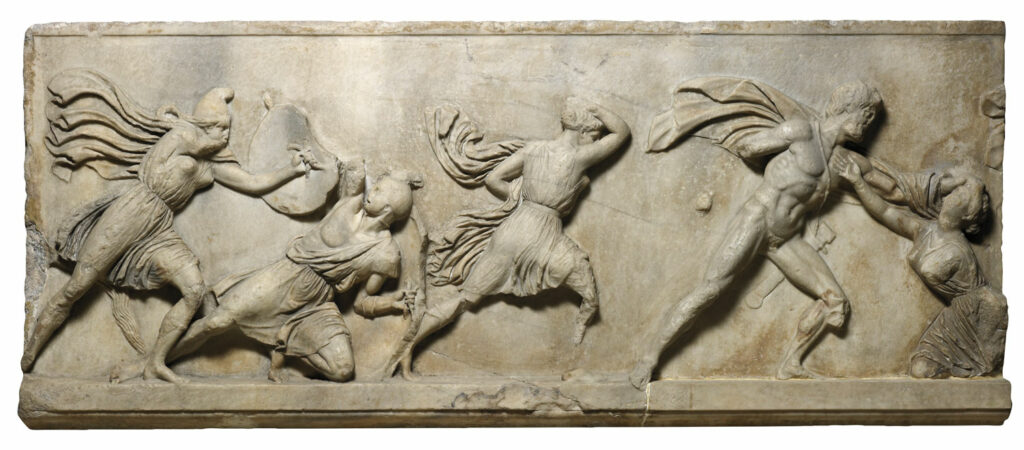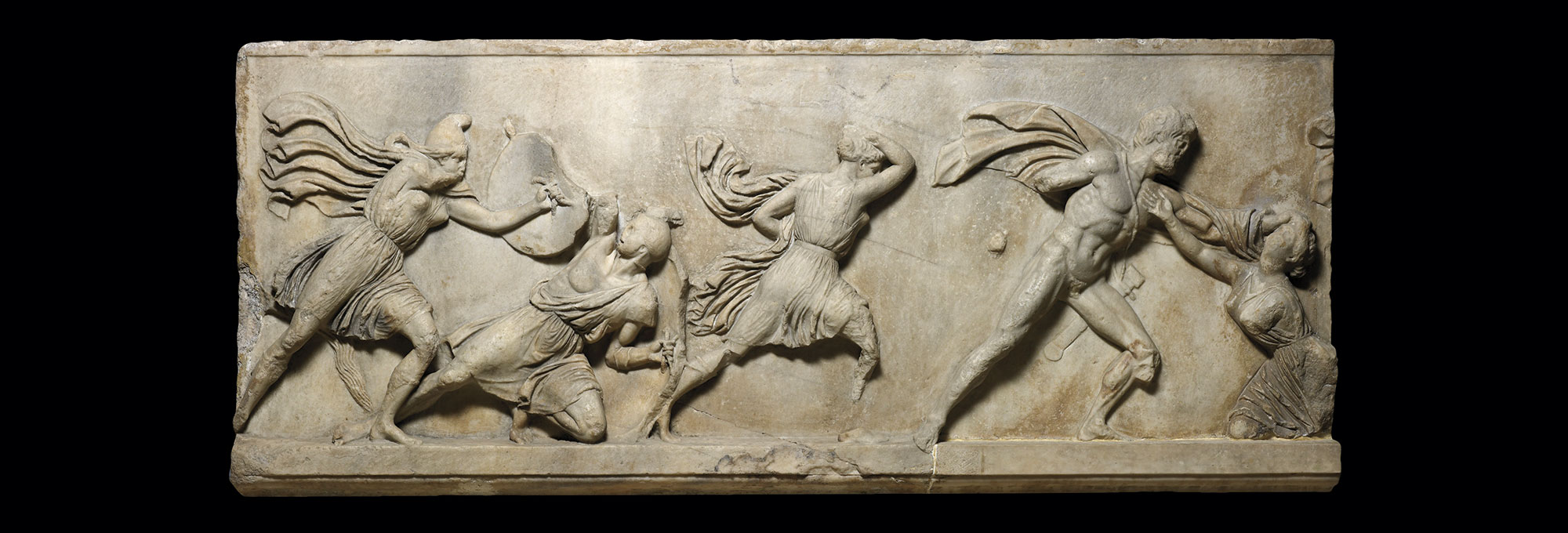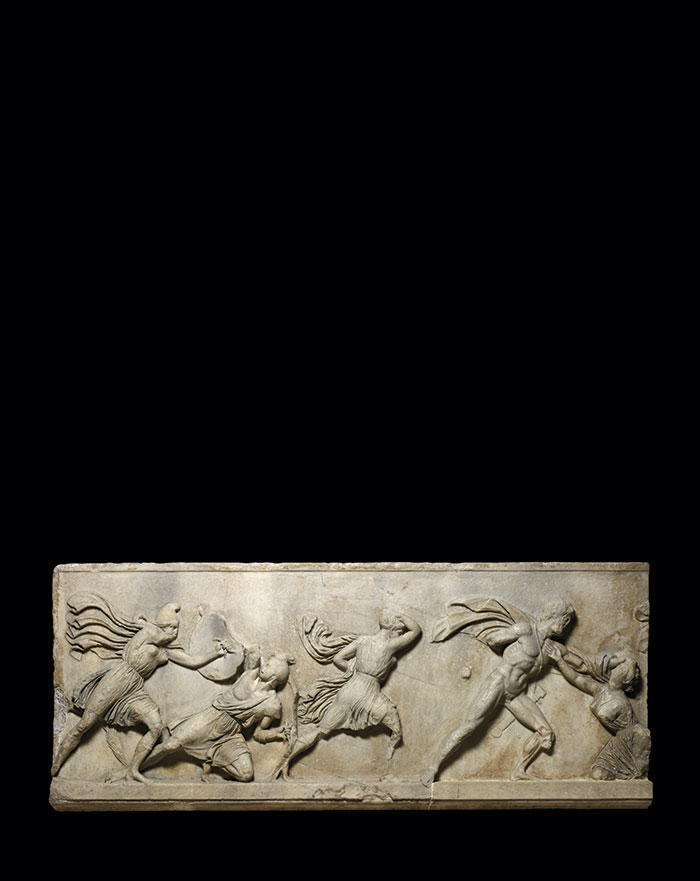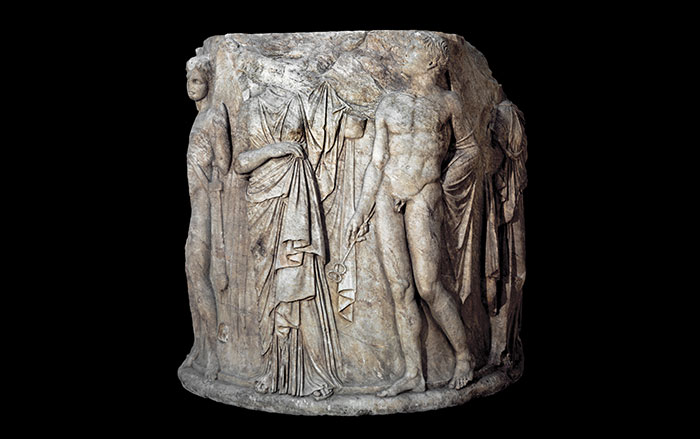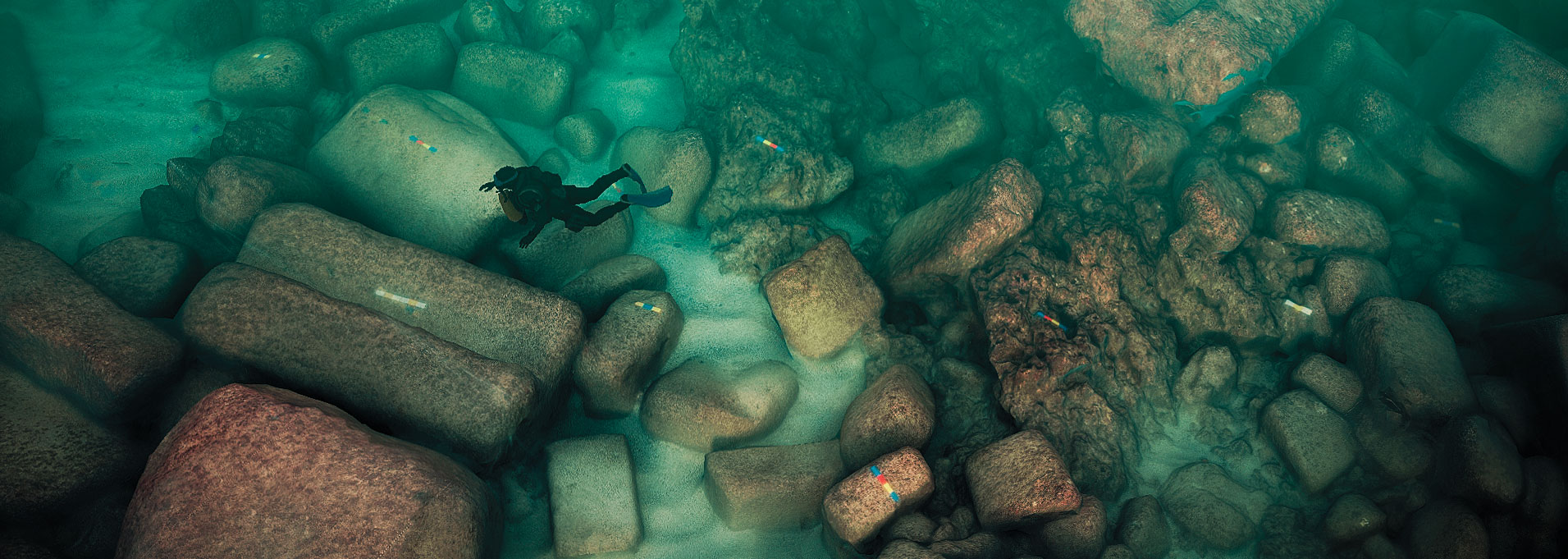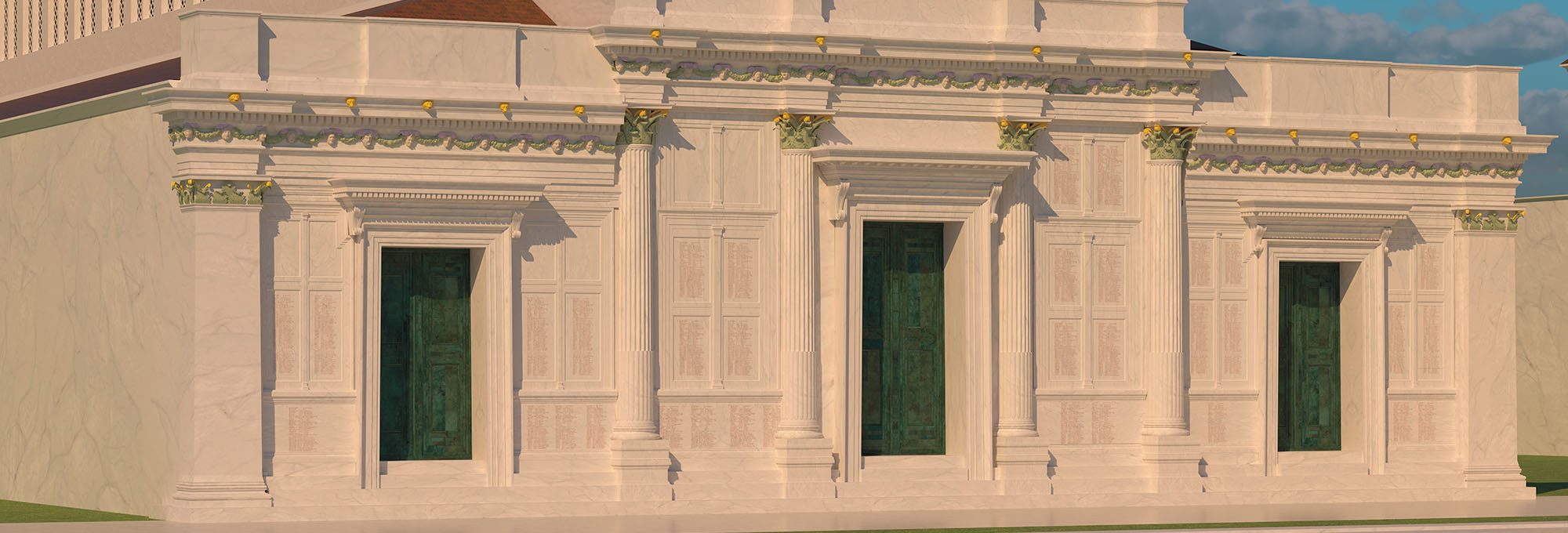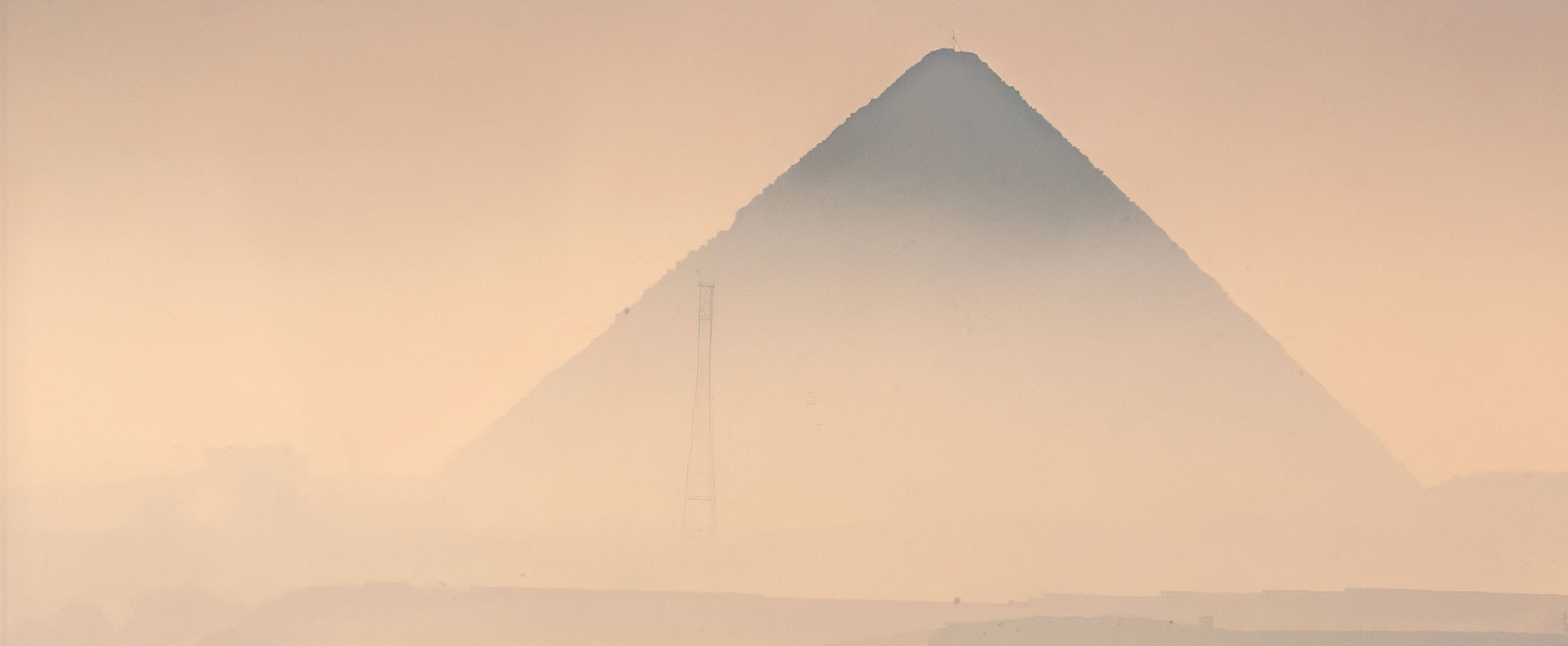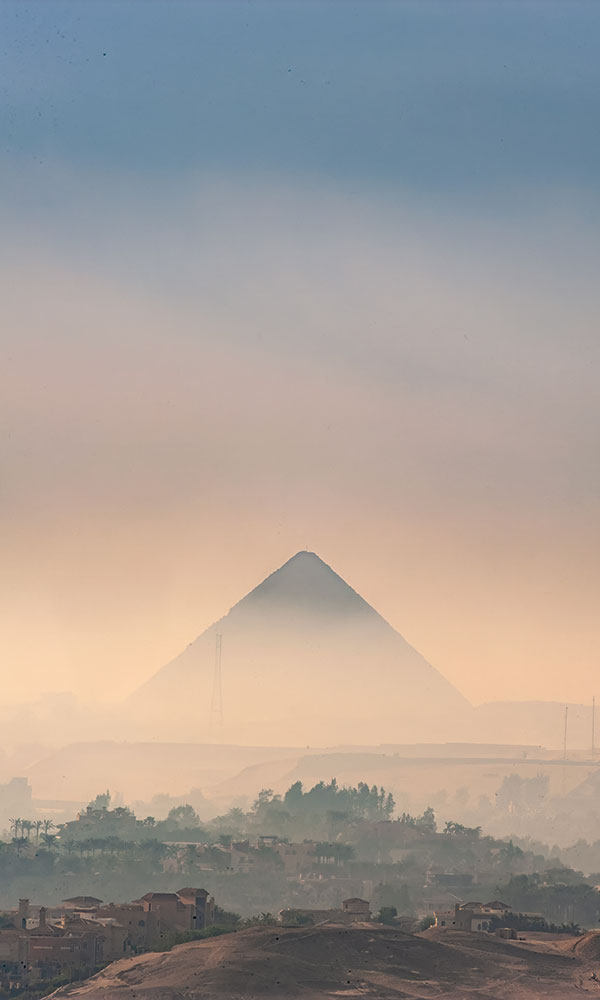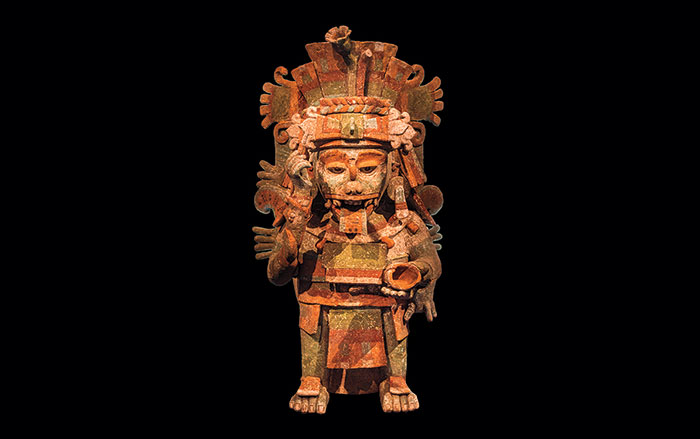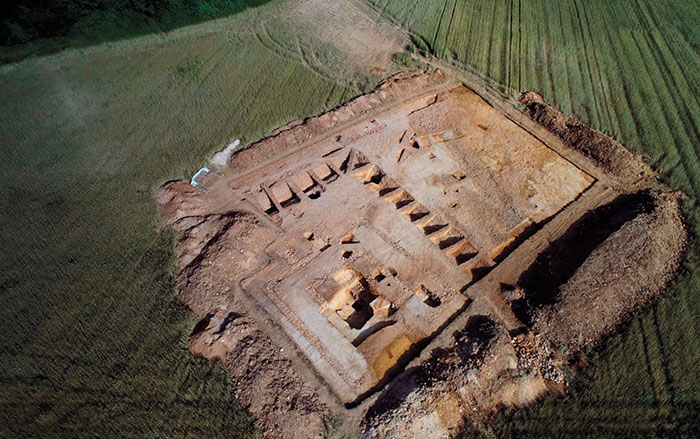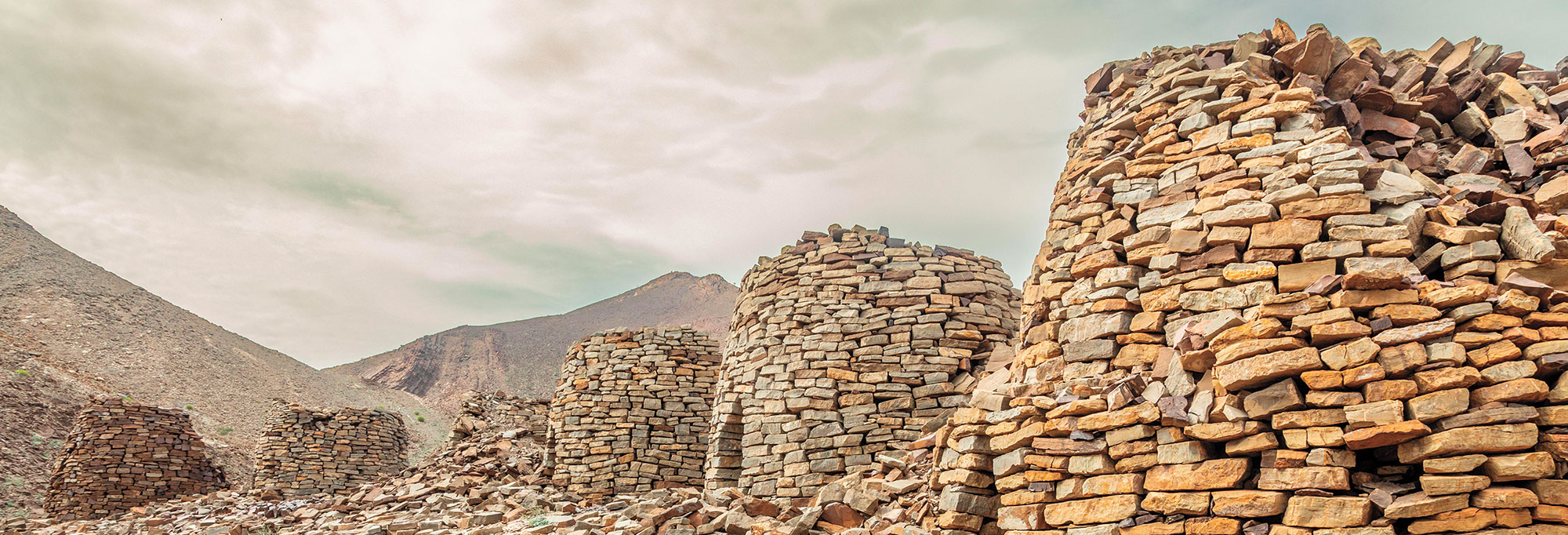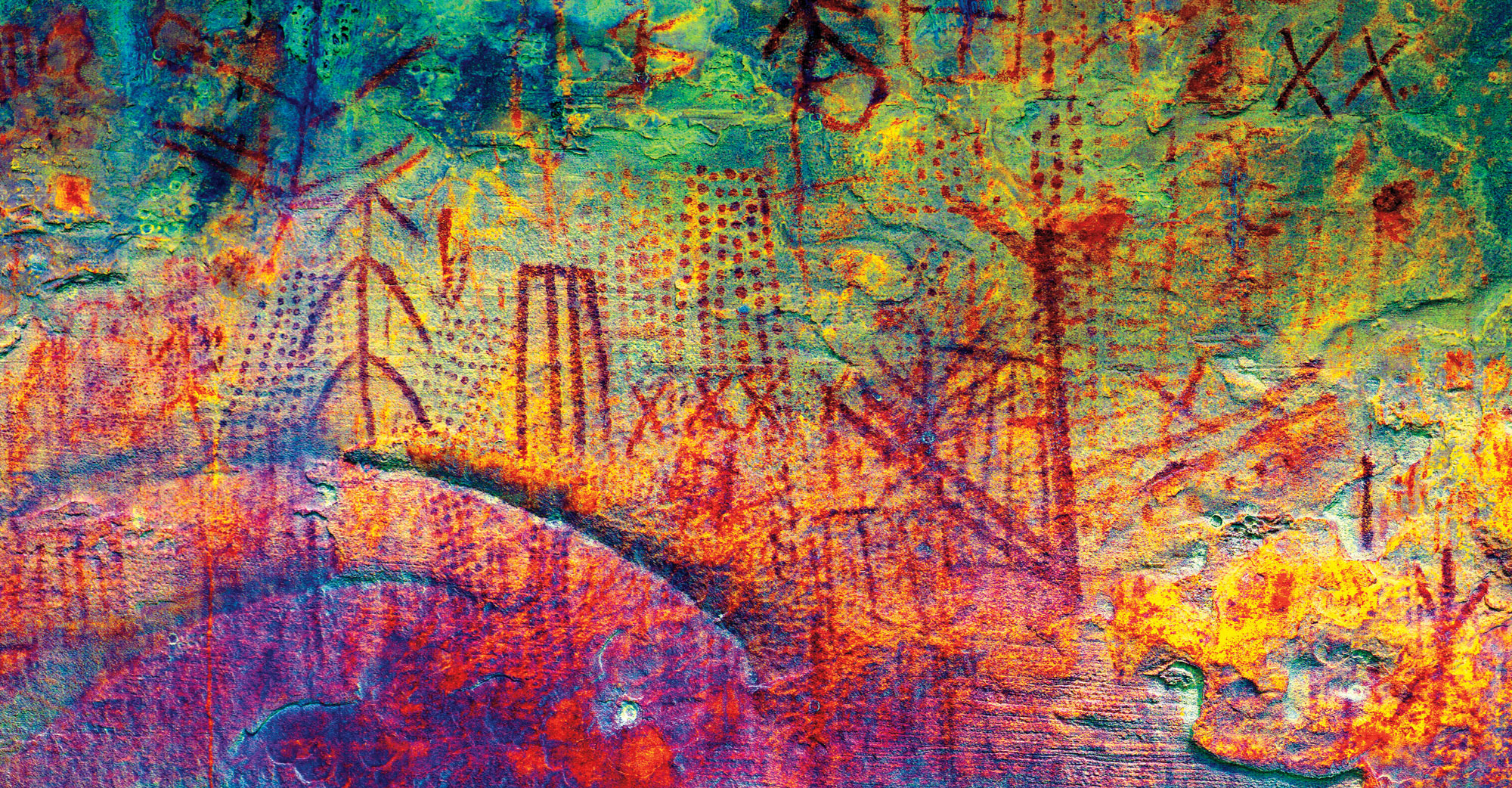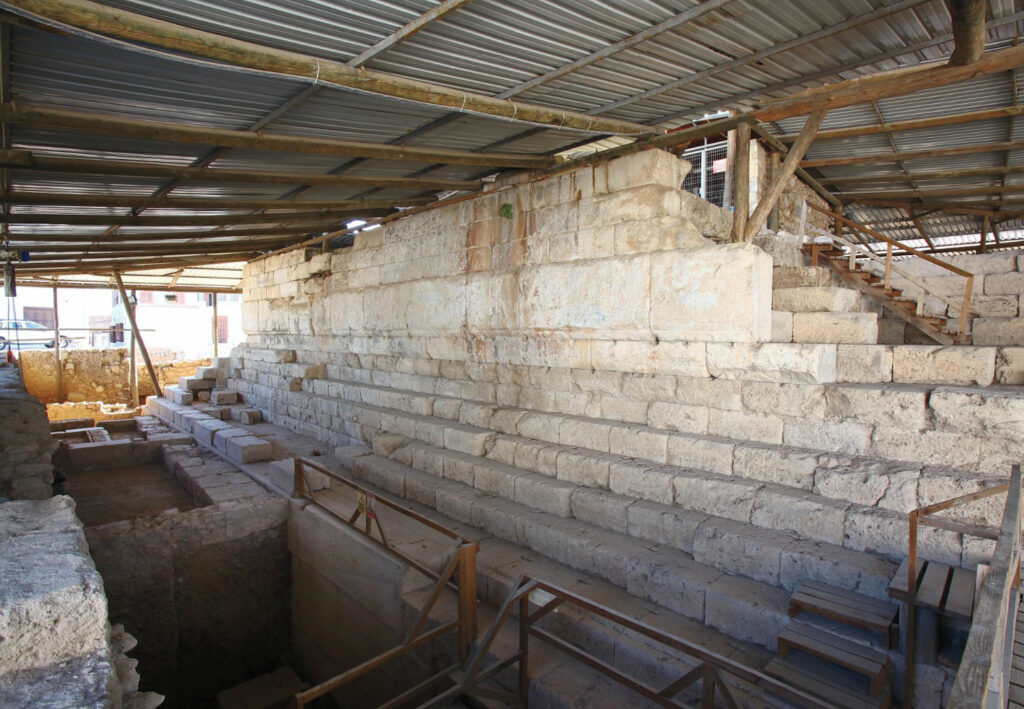
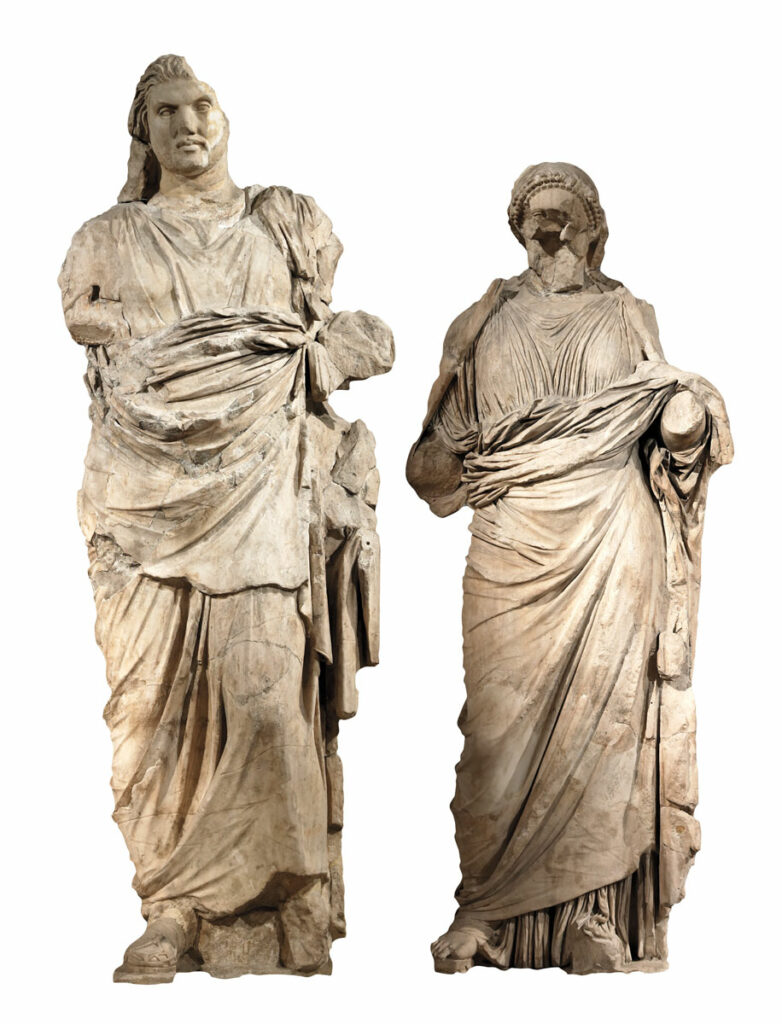
The Mausoleum at Halicarnassus, the massive tomb built for Mausolus, governor of the southwestern Anatolian province of Caria from 377 to 353 b.c., lies in ruins at the center of the ancient city of Halicarnassus, modern Bodrum. Meager blocks from the monument are scattered where once stood a 14-story-tall structure clad in shining white marble and covered with decorative columns, immense sculptures, and expressive friezes designed by the most famous sculptors of the day. In their efforts to visualize this now-ruined monument, scholars have more to go on than for some of the other Seven Wonders.
In addition to the surviving sculptures and reliefs, parts of a structure exist that may have served as a model for the mausoleum. This tomb in the ancient city of Milas, some 25 miles from Bodrum, likely belonged to Mausolus’ father, Hecatomnus. An inscription embedded in the southern wall of a sanctuary surrounding the tomb provides a crucial clue regarding its connection to Mausolus’ family. It reads “Mausolus, son of Hecatomnus, dedicated this altar.” “This constitutes valuable evidence linking the sanctuary to the lineage of Hecatomnus,” says art historian Ali Yalçın, director of the Milas Archaeology Museum. Hecatomnus’ tomb has three components. Its podium measures 118 feet long, 138 feet wide, and 18 feet tall at the highest preserved point. Atop this sits a burial chamber containing a sarcophagus. Archaeologists investigated and conserved an upper chamber about a decade ago, after looters attacked the monument in 2008.
Hecatomnus’ sarcophagus is covered with reliefs, some depicting Mausolus and his sister and wife, Artemisia. Yalçin says these closely resemble statues from the Mausoleum at Halicarnassus thought by some to represent the pair. Paintings of Amazons on Hecatomnus’ burial chamber walls, he adds, are almost identical to the friezes from Mausolus’ tomb. “From both an architectural and artistic perspective,” Yalçin says, “the sanctuary of Hecatomnus may be regarded as the prototype of the Mausoleum at Halicarnassus.”
